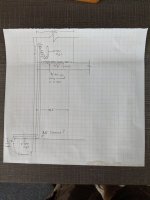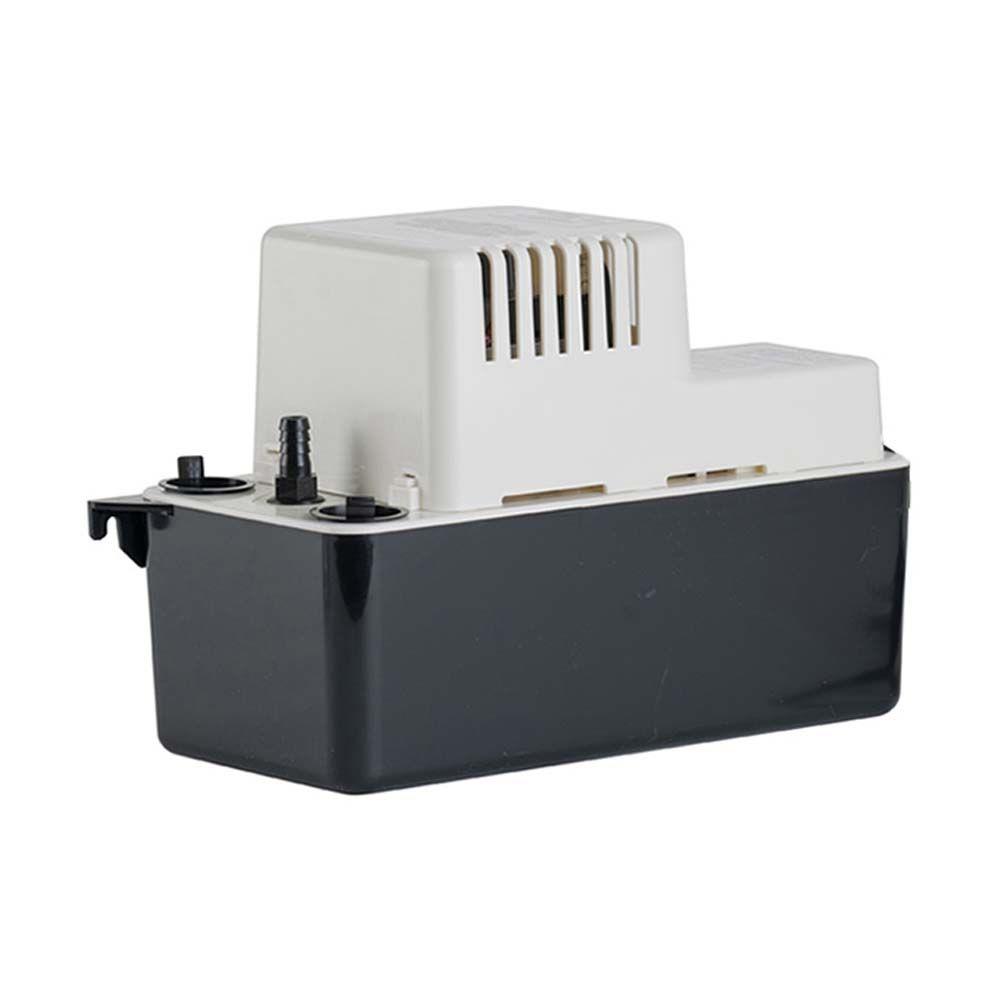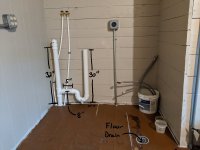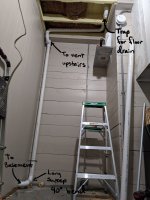J. Lovell
New Member
Happy 4th everyone! I'm new to this site, so please be gentle. I'm a 5-or-so-year diyer that mostly figures things out on the internet and I need some advice on how to drain a new laundry room area that I'm installing in the 2nd floor of an enclosed stairwell for the upstairs tenant of my 2-family house. There is currently no plumbing nearby, so I need to run it down a floor and then over to the basement. I've prepared a sketch showing a rough plan - the washer will pump into a 2" riser flowing down to a P-trap and then over to a 2" vented (1.5" vent) drain that will fall 12 or so feet to 90 and into the basement with 3 or 4 more bends to get it to the main stack. I read that I need a 4 or 5" min trap arm before the big drop and I think I just read that I need 30" min from the bottom of my trap arm to the top of my riser. Does this seem reasonable?
I also want to install a drain pan under the washer and condensation dryer that I'll pipe using 3/4" to the 2" drain... and I think I'm just now realizing that this will mean my p-trap needs to be below the floor in the joist area. Any help is much appreciated! Thanks everyone.
I also want to install a drain pan under the washer and condensation dryer that I'll pipe using 3/4" to the 2" drain... and I think I'm just now realizing that this will mean my p-trap needs to be below the floor in the joist area. Any help is much appreciated! Thanks everyone.




